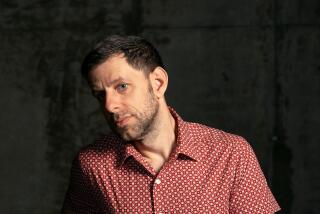Yuval Sharon and the Industry take on the myth of America in the opera ‘Sweet Land’
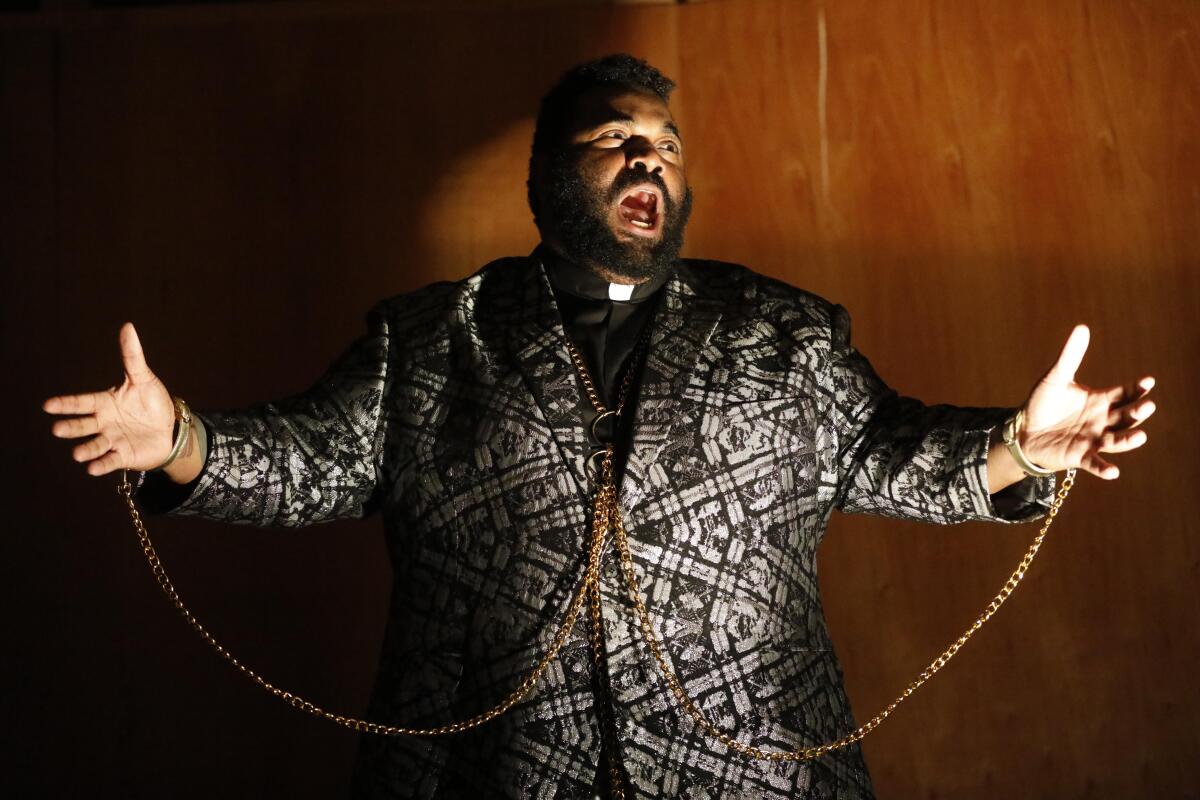
- Share via
Toss out everything you thought you knew about the land you are currently occupying.
MacArthur grant winner Yuval Sharon’s avant-garde L.A. opera company, the Industry, is taking on the subject in its latest production, “Sweet Land.” And the creative clamor of rehearsal here in Los Angeles makes clear that this opera is an intense collaboration among renowned artists in service of a common goal: the excavation, deconstruction and reassembly of the myths surrounding the founding of America.
To tackle weighty subjects like immigration, cultural appropriation, racial identity and colonialism, Sharon has enlisted help: interdisciplinary artist Cannupa Hanska Luger, co-director and costume designer, who was raised on the Standing Rock Sioux reservation in North Dakota; chamber music and noise composer Raven Chacon, a member of the Navajo Nation; Pulitzer Prize-winning composer and performance artist Du Yun, who immigrated from China when she was 20; librettist Aja Couchois Duncan, a writer of Ojibwe, French and Scottish descent; and African American librettist and poet Douglas Kearney.
It’s a lineup that would make antiquated history books shake on their shelves.
“It was definitely about building a team that had as many points of view as possible,” Sharon says on a recent windy afternoon, standing beside Luger on the narrow spit of land on the outskirts of downtown L.A. known as Los Angeles State Historic Park. Here, on open land and in three pop-up theaters, “Sweet Land” will premiere Saturday and run through March 15.
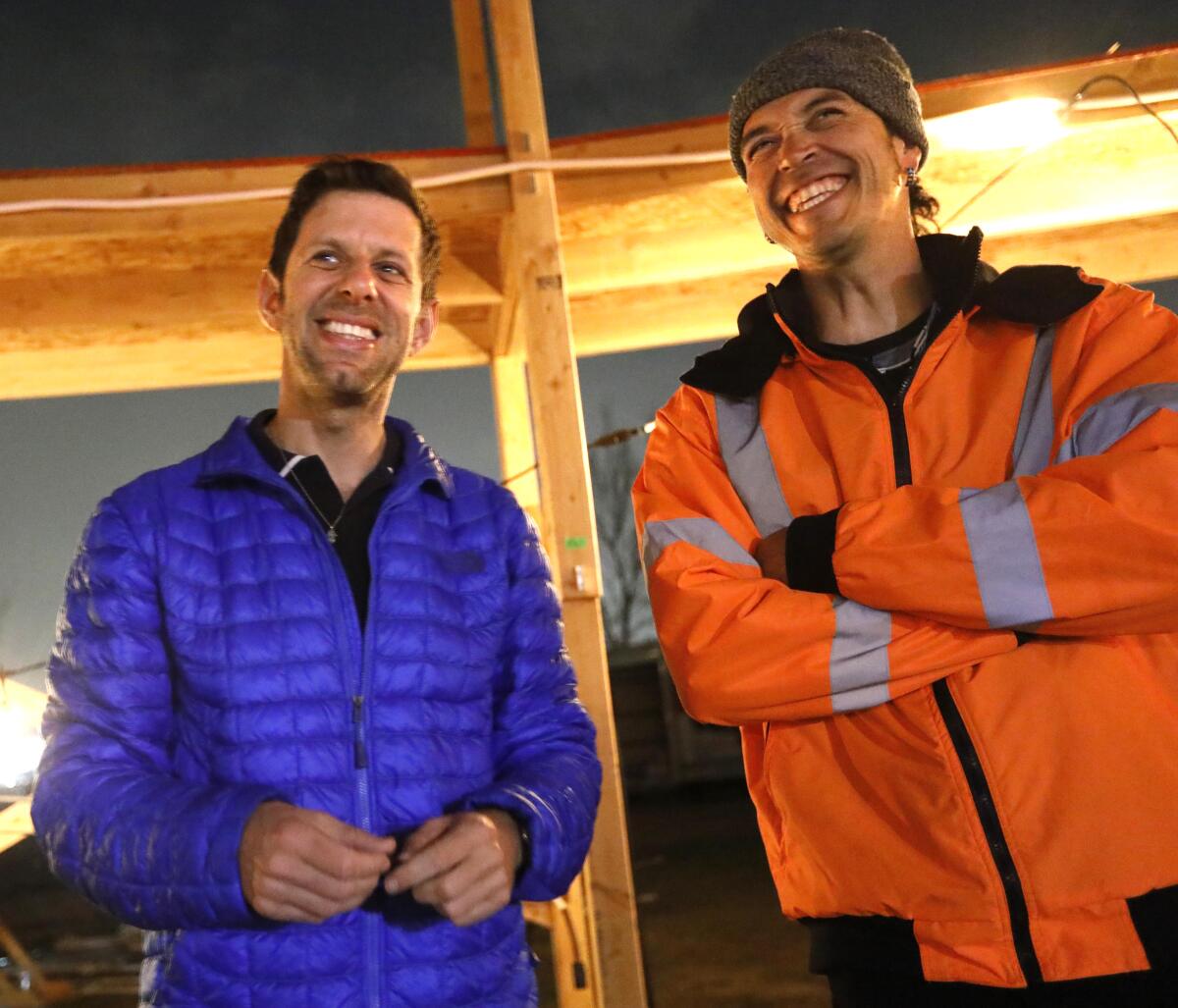
Majority rule was not an option in this creative scenario, Sharon says. The group operated only through cooperation, collaboration and consensus.
“From Day One we were very much creating this story together,” Du says. “It’s us engaging all of our individual experiences, saying what this scenario could have looked like for us, and then extrapolating that into the work.”
Sharon calls “Sweet Land” the most “horizontal” work the Industry has created. He also calls it the most important.
This is not a light statement coming from a man internationally known for breaking operatic sound barriers and re-imagining the art form. The Industry’s projects have included conceptual giants such as “Invisible Cities,” performed amid the hustle of Los Angeles’ Union Station in 2013; and “Hopscotch,” the 2015 opera that took place in 24 cars driving in and around downtown L.A.
The Industry is dubbing “Sweet Land” an opera that “erases itself.” An audience limited to 200 (opening night tickets, at $250 each, are sold out) will arrive at L.A. State Historic Park and be shepherded into a black box theater with a traditional proscenium stage. Later they will be divided into two groups and guided to different open-air, theater-in-the-round performance spaces. Each audience member will experience one of two stories.
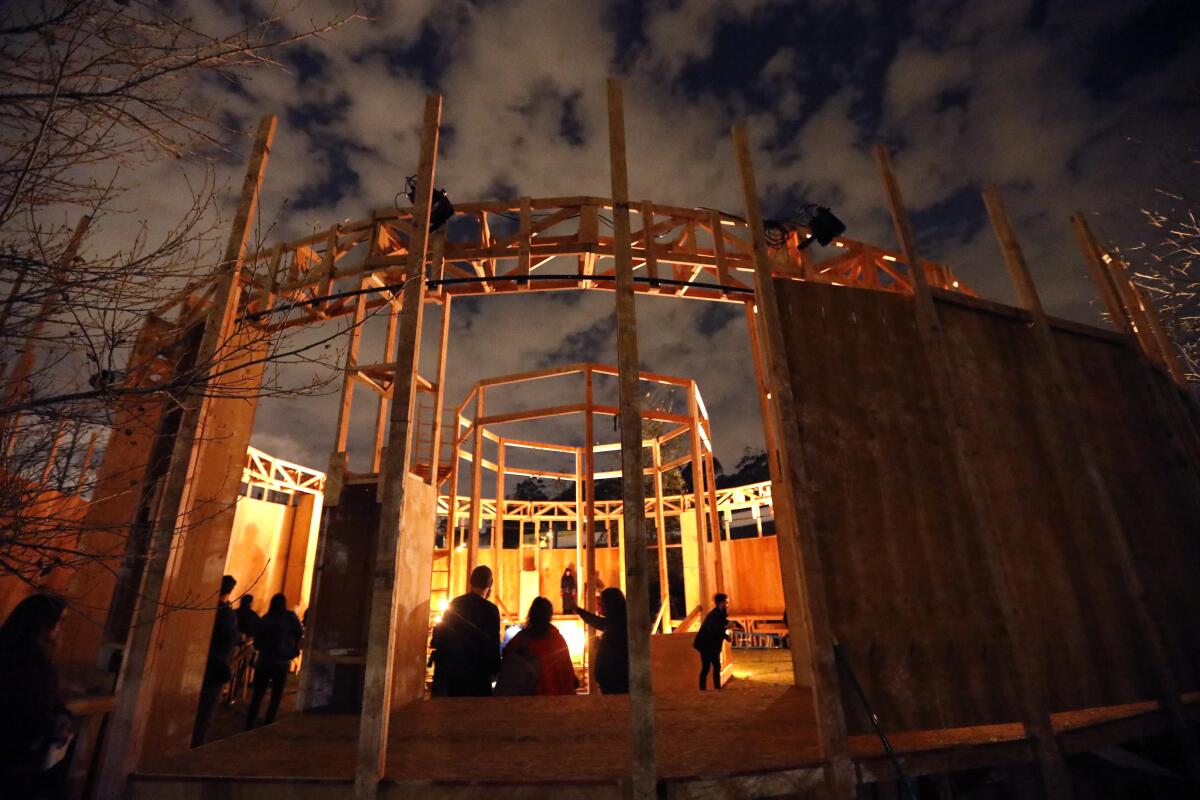
One story line, titled “Feast,” tells of Hosts and Arrivals coming together. The Hosts already inhabit the land; when the Arrivals show up on a ship, they are invited in.
When these Arrivals appear on scene, Chacon says, they articulate two ideas: “We’re starving. Can you please feed us?” And, “We’re here and we can’t go back, so what’s over that hill?”
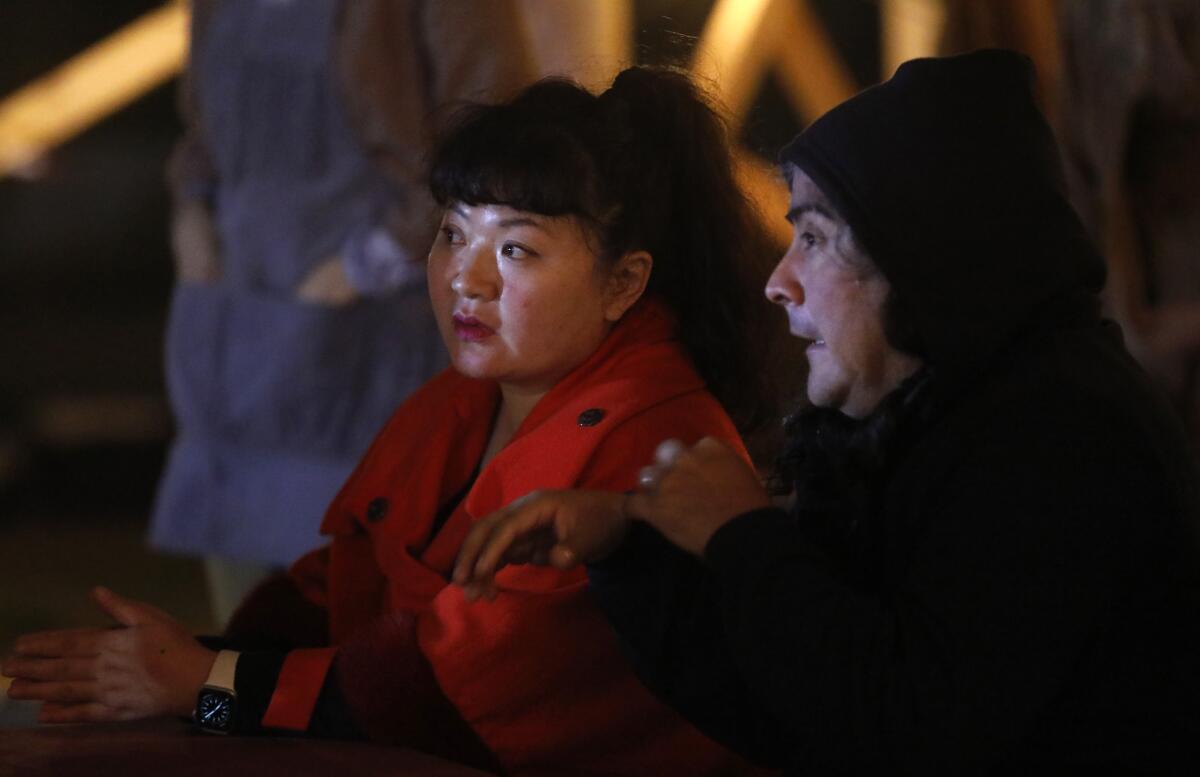
“They come hungry, and they are needy and they overstep their bounds,” says Luger, adding that “Feast” takes aspects of indigenous hospitality into account: what happens when Arrivals’ sense of wealth is defined by what they have, but Hosts’ sense of wealth is tied to what they can give to others.
The opera’s creators are careful to say they are not strictly focusing on what happened between Native Americans and European settlers in North America. Luger says “Sweet Land” takes place in a pocket universe.
“By relaxing our gaze and not being specific, components of different experiences globally are represented in this process,” he says.
The immersive nature of the opera, adds Chacon, makes it so audience members are held accountable and recognize that they are part of the story.
The Arrivals’ eventual land grab is violent — uncomfortable and divisive history that the creative team says should not be distilled into a neat us-versus-them narrative.
After the first part of “Feast,” audience members are ushered to a point in the park called “the crossroads,” where they rejoin others who have just experienced the story line titled “Train.” After an eight-minute set change, the audiences are again ushered into their respective performance spaces where they experience a completely whitewashed version of what they saw the first time.
For those who saw “Feast,” Luger says, “the scenes flip, and when you re-enter it’s like a sanitized Golden Corral buffet-style feast. All you can eat.”
“Train” is meant to be the sequence of events that occurs after “Feast.” The audience is taken on a journey of Manifest Destiny. The engine is a harbinger of doom, an “endless, relentless machine,” Sharon says, adding that the scene is very dark.
The second, erased version of “Train” is bright and loud, like a commercial. In fact, the composers used a lot of commercial music in conceiving it.
“There was no violence involved in the making of this train; no one suffered for the making of this train,” Sharon says. “We now get to consume. The land becomes a commodity that is open to us. So it’s horribly joyful.”
In both “Feast” and “Train,” a character remains who remembers the truth of what really happened.
“Like a black line on a redacted statement,” Luger says.
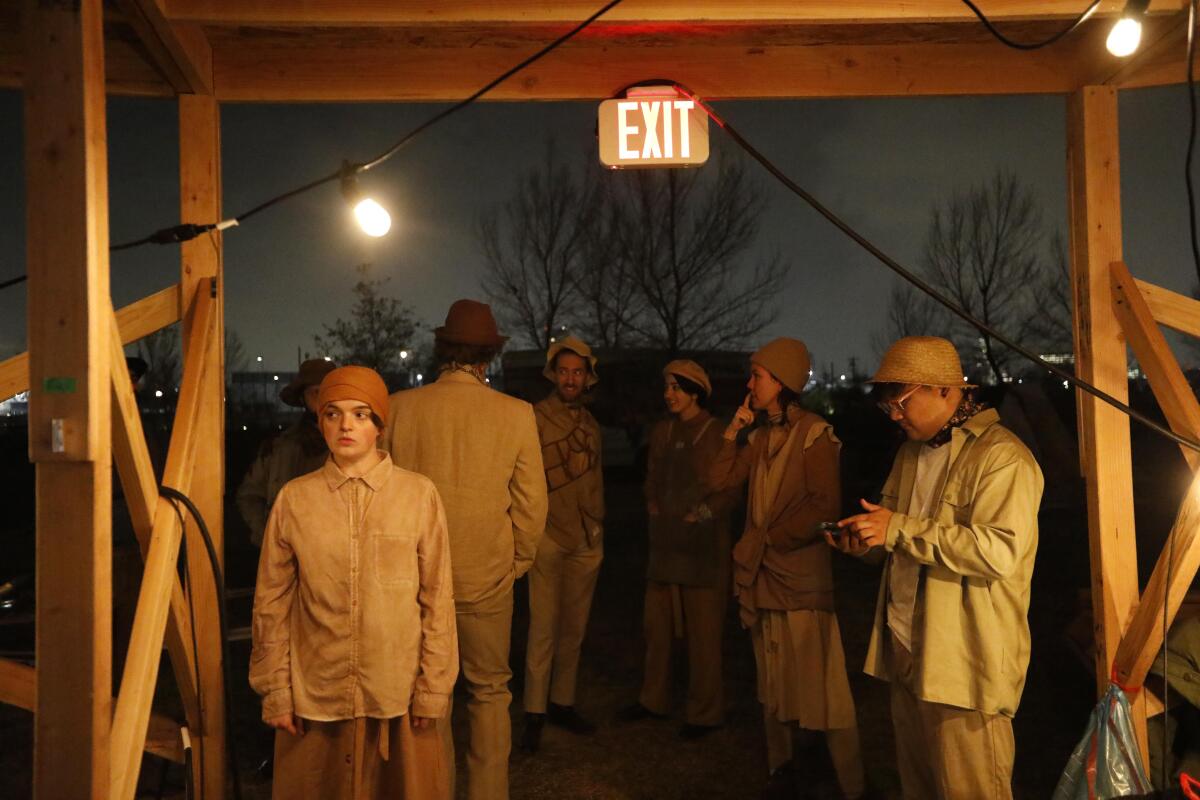
Los Angeles State Historic Park, formerly known as the Cornfield, is a vortex of cultural triumph and trauma. The 32-acre former brownfield sandwiched between the Gold Line tracks and Spring Street on the industrial outskirts of Chinatown, was the site of Southern Pacific Railroad’s River Station. It served as a point of disembarkation for migrants from around the world.
“I didn’t know about this park, but now every time I come here, I’m going to think, ‘Whose land was this?’” says Sharon Chohi Kim, the “Sweet Land” performer who plays Wiindigo, a mythical creature known as a “hungry ghost” in a variety of cultures and is representative of the harm wrought by greed and violence.
Kim sits at a picnic table as the sun sets in a fiery blaze over Chinatown and the lights of downtown’s skyscrapers flicker on, like tiny yellow eyes blinking open. A Metro train rattling by, a helicopter buzzing overhead and the metal thrum of cars creeping through rush hour on the 110 Freeway blend with the buzz saws and staple guns of crews constructing the “Sweet Land” sets.
The sonic landscape of the city will play as much of a role in the opera’s soundtrack as Chacon and Du’s compositions. And the land itself will serve as a crucial main character alongside the 36-member ensemble.
Cast members, most of whom are L.A.-based singers, are as representative of varied cultural perspectives as are the creators.
Micaela Tobin, who plays the mischievous and immortal Coyote, is a classically trained vocalist who had drifted away from the traditional opera world, steeping herself in the underground L.A. noise and electronica scene because she didn’t see herself or her culture reflected in the art form.
“Sweet Land,” with its nontraditional, immersive presentation and radical themes of representation, felt like a revelation to her.
“I always thought this is the kind of stuff we do in basements or in DIY venues,” she says. “I remember first stepping into rehearsal and seeing a roomful of black and brown faces and it was like, ‘Wow, we were all here before,’ but in the past when you’re in other operas, it’s not necessarily like this. It was emotional for me.”
Opera, says Luger, has a long history of elitism, which is why he feels it’s the ideal medium to address how mass culture has largely succeeded in erasing the true story of how we came to be here, on this land, at this point in history.
“Opera is a privileged machine,” he says. “So as a rez kid, as a Native person in this country, having access to an opera crowd ... ,” he trails off, shaking his head and smiling at the possibilities.
Du adds that opera wasn’t created just in the Western world. In China it blossomed in the teahouses and the royal court. Still, she says, there is great power in occupying the space dominated by the Western tradition with an opera like “Sweet Land.”
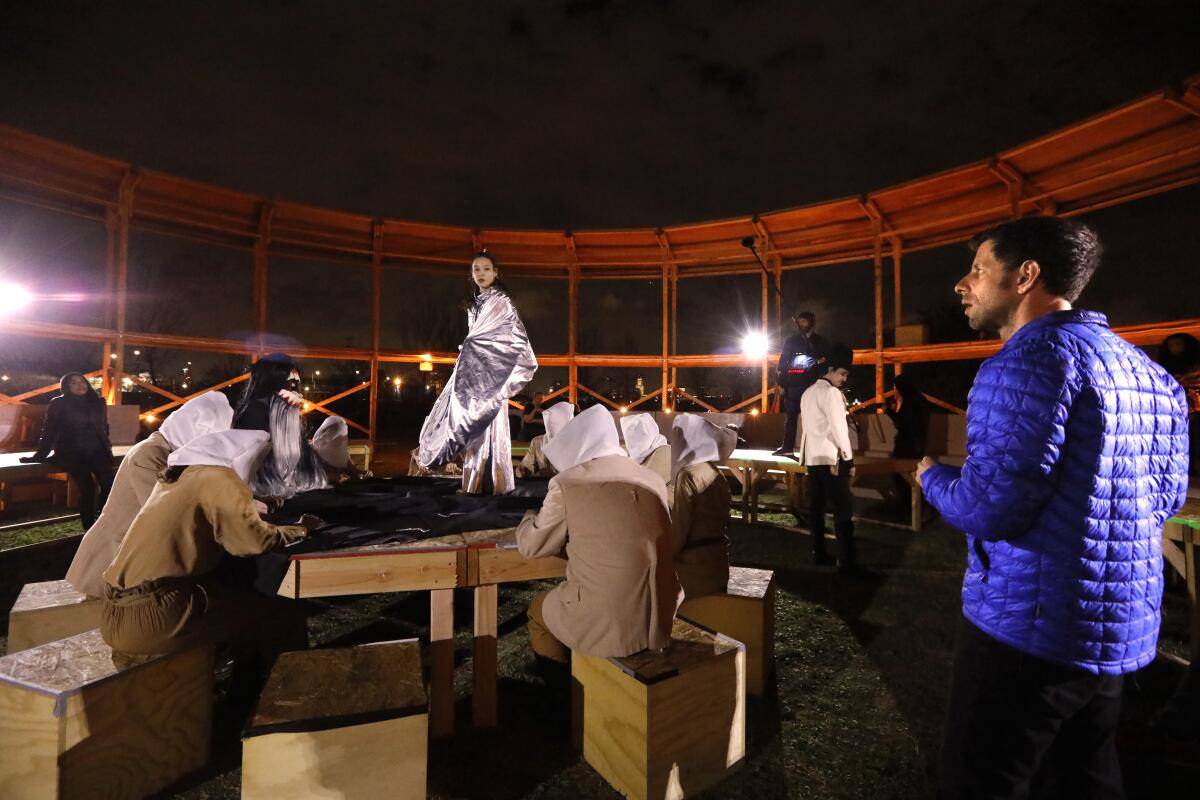
Sharon jumps in.
“When I look around at the operatic landscape in this country, I see more colonialism. I see French, German and Italian repertoire, and I see stuff not at all related to the time we’re living in,” he says. “There’s so much to talk about right now, and yet the No 1. opera performed in America last year was ‘The Barber of Seville.’”
“Sweet Land” is not interested in what Sharon calls “the gold-star approach,” where audiences can pat themselves on the backs for exposing themselves to some heavy themes before heading off for cocktails and a gourmet dinner.
By taking opera out of the opera house and placing it on the land, Sharon and his collaborators hope to put audience members in an uncomfortable position.
“That discomfort is a valuable tool to stimulate new thoughts and ideas and to really provoke new ways of thinking,” Sharon says.
“Sweet Land,” Luger adds, should not end with the last note. Audiences must take it with them. This story, he says, scanning the smog-smudged horizon, ends somewhere out there.
'Sweet Land'
Where: Los Angeles State Historic Park, 1724 Baker St., L.A.
When: 8 p.m. Saturday; 4, 5:30 and 8 p.m. Sunday; 6 and 8:30 p.m. March 6-7; 5, 6:30 and 9 p.m. March 8 and 15; 6:30 and 9 p.m. March 13-14
Tickets: $75-$250
Info: (213) 761-8598; theindustryla.org
Running time: 1 hour, 25 minutes
More to Read
The biggest entertainment stories
Get our big stories about Hollywood, film, television, music, arts, culture and more right in your inbox as soon as they publish.
You may occasionally receive promotional content from the Los Angeles Times.

